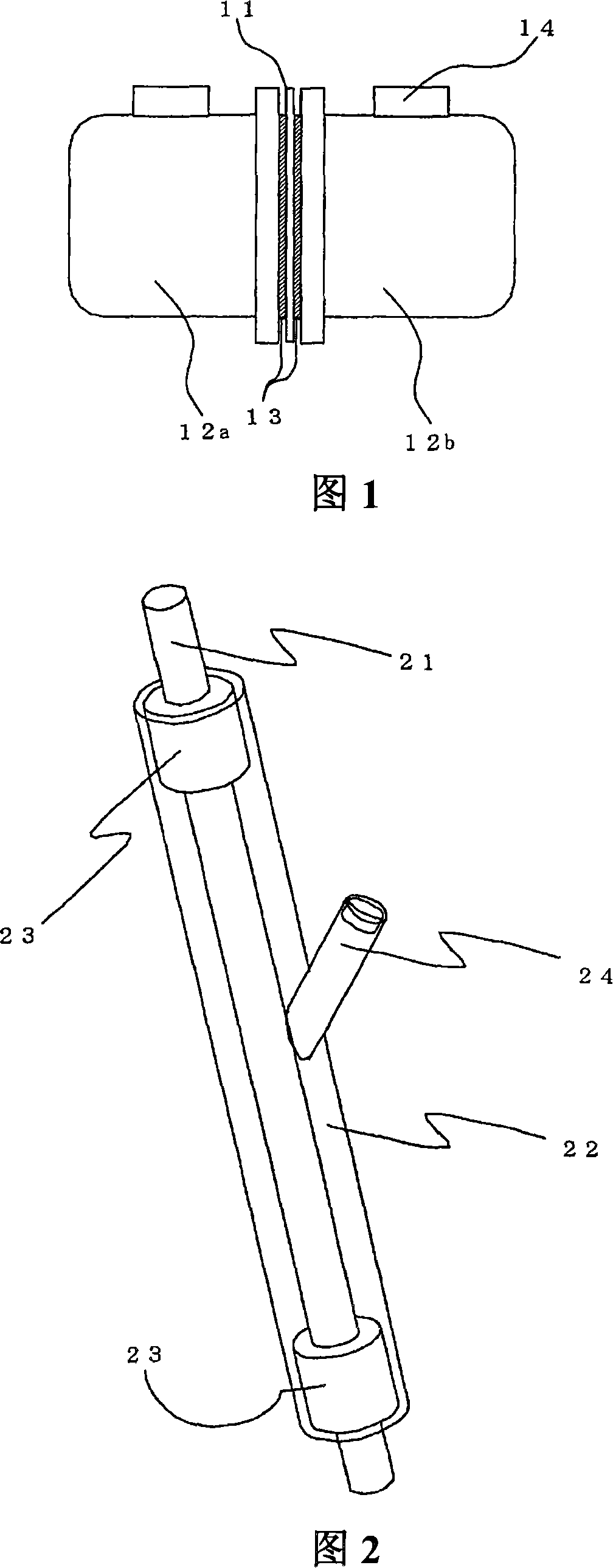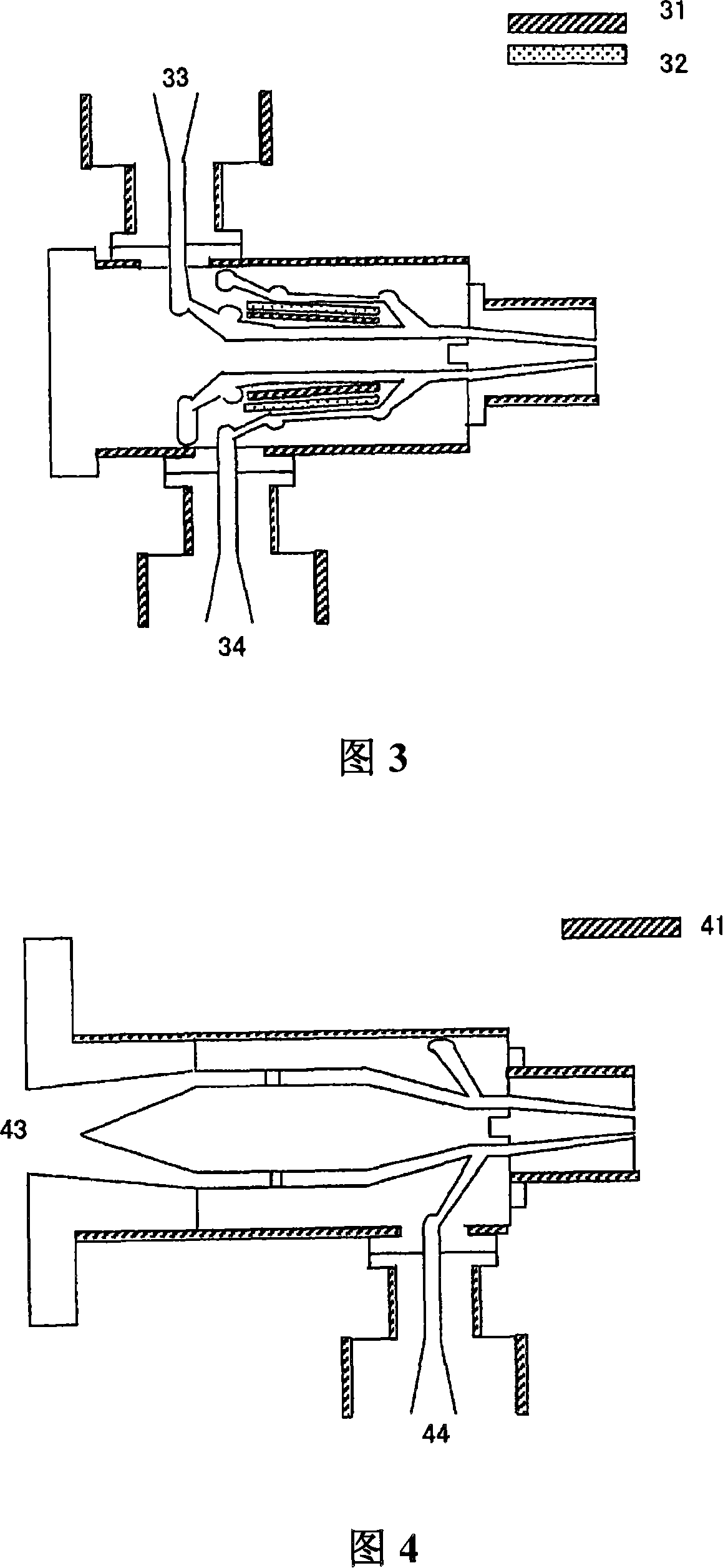Chlorotrifluoroethylene copolymer containing laminate and process for production thereof
A technology of chlorotrifluoroethylene and its manufacturing method, which is applied in the field of laminates and can solve the problems of low permeability, reduction, and thermal deterioration of chemical liquids, etc.
- Summary
- Abstract
- Description
- Claims
- Application Information
AI Technical Summary
Problems solved by technology
Method used
Image
Examples
Synthetic example 1
[0135] Add 392kg of demineralized pure water into a jacketed stirring polymerization tank capable of holding 1320kg of water, fully replace the inner space with pure nitrogen, and then vacuum out the nitrogen. Then press 307kg of octafluorocyclobutane, 5.8kg of chlorotrifluoroethylene [CTFE], 49.6kg of tetrafluoroethylene [TFE], and 27.7kg of perfluoro(propyl vinyl ether) [PPVE], and adjust the temperature to 35°C , start stirring. 0.8 kg of a 50% by mass methanol solution of di-n-propylperoxydicarbonate [NPP] was added thereto as a polymerization initiator to initiate polymerization. During the polymerization, add the mixed monomer (CTFE:TFE:PPVE (mol%)=25:73:2) whose composition is adjusted to be the same as that of the required copolymer to maintain the pressure in the polymerization tank at 0.80MPa, and simultaneously polymerize to The ratio of the total additional amount to the solvent was 70% by mass. Then, the remaining gas in the polymerization tank was discharged, an...
Synthetic example 2
[0137] Add 392kg of demineralized pure water into a jacketed stirring polymerization tank capable of holding 1320kg of water, fully replace the inner space with pure nitrogen, and then vacuum out the nitrogen. Then press in 307kg of octafluorocyclobutane, 8.3kg of chlorotrifluoroethylene [CTFE], 49.6kg of tetrafluoroethylene [TFE], and 29.0kg of perfluoro(propyl vinyl ether) [PPVE], and adjust the temperature to 35°C , start stirring. 0.8 kg of a 50% by mass methanol solution of di-n-propylperoxydicarbonate [NPP] was added thereto as a polymerization initiator to initiate polymerization. During the polymerization, add the mixed monomer (CTFE:TFE:PPVE (mol%)=28:70:2) whose composition is adjusted to be the same as that of the required copolymer to maintain the pressure in the polymerization tank at 0.80MPa, and simultaneously polymerize to The ratio of the total additional amount to the solvent was 70% by mass. Then, the remaining gas in the polymerization tank was discharged,...
Synthetic example 3
[0139] Add 392kg of demineralized pure water into a jacketed stirring polymerization tank capable of holding 1320kg of water, fully replace the inner space with pure nitrogen, and then vacuum out the nitrogen. Then press in 307kg of octafluorocyclobutane, 18kg of chlorotrifluoroethylene [CTFE], 35kg of tetrafluoroethylene [TFE], and 22kg of perfluoro(propyl vinyl ether) [PPVE], adjust the temperature to 35°C, and start stirring . 3.2 kg of a 50% by mass methanol solution of di-n-propylperoxydicarbonate [NPP] as a polymerization initiator was added thereto to initiate polymerization. During the polymerization, add the mixed monomer (CTFE:TFE:PPVE (mol%)=37:61:2) whose composition is adjusted to be the same as that of the required copolymer to maintain the pressure in the polymerization tank at 0.69MPa, and simultaneously polymerize to The ratio of the total additional amount to the solvent was 70% by mass. Then, the remaining gas in the polymerization tank was discharged, and ...
PUM
| Property | Measurement | Unit |
|---|---|---|
| melting point | aaaaa | aaaaa |
| melting point | aaaaa | aaaaa |
| thickness | aaaaa | aaaaa |
Abstract
Description
Claims
Application Information
 Login to View More
Login to View More - R&D
- Intellectual Property
- Life Sciences
- Materials
- Tech Scout
- Unparalleled Data Quality
- Higher Quality Content
- 60% Fewer Hallucinations
Browse by: Latest US Patents, China's latest patents, Technical Efficacy Thesaurus, Application Domain, Technology Topic, Popular Technical Reports.
© 2025 PatSnap. All rights reserved.Legal|Privacy policy|Modern Slavery Act Transparency Statement|Sitemap|About US| Contact US: help@patsnap.com


